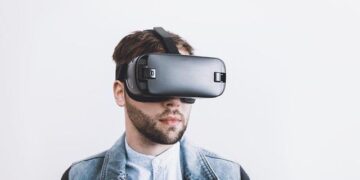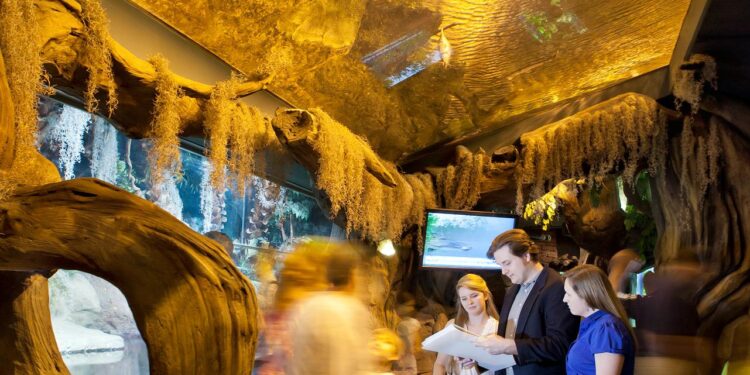Purdue Polytechnic Institute is making waves in the immersive experience industry with its innovative Themed Entertainment Design program. As demand for engaging, story-driven environments continues to grow across theme parks, museums, and live events, Purdue is equipping students with a unique blend of creative, technical, and project management skills. This forward-thinking curriculum not only prepares graduates to design captivating attractions but also positions Purdue as a rising leader in themed entertainment education.
Innovative Approaches in Themed Entertainment Design at Purdue Polytechnic
At Purdue Polytechnic, the fusion of technology and storytelling creates groundbreaking experiences in themed entertainment design. Students and faculty collaborate to push the boundaries of immersive environments by integrating augmented reality (AR), virtual reality (VR), and interactive media. This multidisciplinary approach enables the development of dynamic attractions that captivate audiences through personalized, engaging narratives and persuasive sensory stimuli.
Innovations extend beyond digital enhancements to include sustainable materials and modular set designs that reduce costs and environmental impact. The program emphasizes real-world applications with partnerships across theme parks, museums, and cultural institutions, preparing students with cutting-edge skills. Below is a sample overview of key focus areas within the curriculum:
| Focus Area | Core Technologies | Industry Impact |
|---|---|---|
| Immersive Storytelling | 360° Projection, Sound Design | Enhanced Visitor Engagement |
| Sustainable Design | Recycled Materials, LED Lighting | Eco-Friendly Attractions |
| Interactive Installations | Motion Sensors, AR | Personalized Experiences |
| Modular Construction | 3D Printing, Lightweight Frames | Cost-Efficient Production |
- Hands-on labs: Developing prototypes from concept to reality.
- Industry collaborations: Real-world projects with leading entertainment brands.
- Emerging technologies: Immersive analytics to measure visitor impact.
Bridging Creativity and Technology for Immersive Visitor Experiences
At Purdue Polytechnic, the fusion of imaginative design with cutting-edge technology forms the cornerstone of crafting captivating environments that transport visitors to new realms. Through the integration of interactive media, augmented reality, and intelligent lighting systems, students and professionals push the boundaries of traditional storytelling, creating multi-sensory experiences that resonate on both emotional and cognitive levels. This holistic approach encourages collaboration across disciplines, ensuring no element is overlooked-from architectural aesthetics to sound engineering, enriching every visitor journey.
Key innovations emerging from this program showcase the power of technology to amplify creative vision. Consider these advancements shaping visitor engagement:
- Spatial Computing: Seamlessly blending physical and digital spaces to deepen immersion.
- Real-Time Data Analytics: Adapting experiences dynamically based on audience interaction.
- Wearable Tech: Personalizing narrative delivery and enhancing accessibility.
| Technology | Role in Experience | Impact |
|---|---|---|
| Augmented Reality | Overlaying digital elements onto real-world environments | Heightened engagement and storytelling depth |
| Interactive Projections | Responsive surfaces reacting to visitor movement | Increased immersion and memorability |
| AI-Driven Soundscapes | Adaptive audio tailored to crowd behavior | Enhanced emotional connection |
Expert Recommendations for Students Pursuing Themed Entertainment Careers
Students diving into the world of themed entertainment design should prioritize a strong foundation in storytelling combined with technical skills. Immersive environments thrive on narratives that resonate emotionally, so engaging with diverse storytelling mediums-such as film, theater, and virtual reality-can significantly enhance design concepts. Additionally, mastering software tools like Autodesk Maya, Adobe Creative Suite, and Unreal Engine is essential to bring these stories to life with precision and creativity. Equally important is cultivating collaborative skills; projects in this industry often involve multidisciplinary teams where clear communication and adaptability are crucial to success.
Key strategies for building a competitive edge include:
- Participate in internships or co-op programs with theme parks and design studios to gain practical industry exposure.
- Develop a versatile portfolio showcasing a range of styles and mediums, emphasizing immersive and interactive projects.
- Stay current with emerging technologies like AR/VR and AI-driven design tools to push creative boundaries.
- Attend themed entertainment conferences and workshops to network and learn from industry pioneers.
| Skill Area | Recommended Tools | Application | |||||||
|---|---|---|---|---|---|---|---|---|---|
| 3D Modeling | Autodesk Maya, Blender | Creating detailed park elements and characters | |||||||
| Visual Storytelling | Adobe Photoshop, After Effects |
Students diving into the world of themed entertainment design should prioritize a strong foundation in storytelling combined with technical skills. Immersive environments thrive on narratives that resonate emotionally, so engaging with diverse storytelling mediums-such as film, theater, and virtual reality-can significantly enhance design concepts. Additionally, mastering software tools like Autodesk Maya, Adobe Creative Suite, and Unreal Engine is essential to bring these stories to life with precision and creativity. Equally important is cultivating collaborative skills; projects in this industry often involve multidisciplinary teams where clear communication and adaptability are crucial to success. Key strategies for building a competitive edge include:
|































